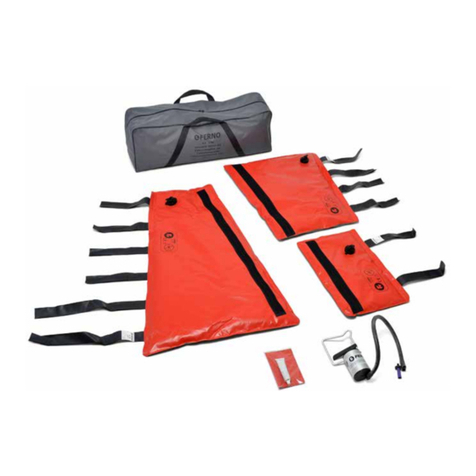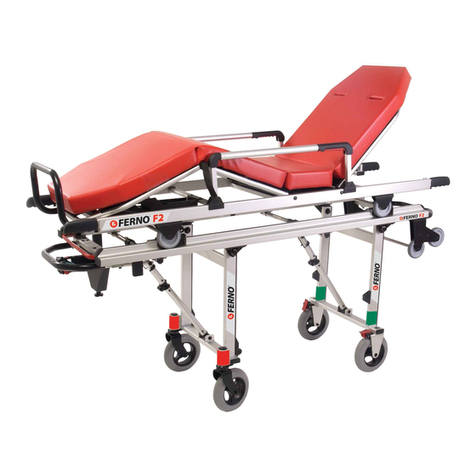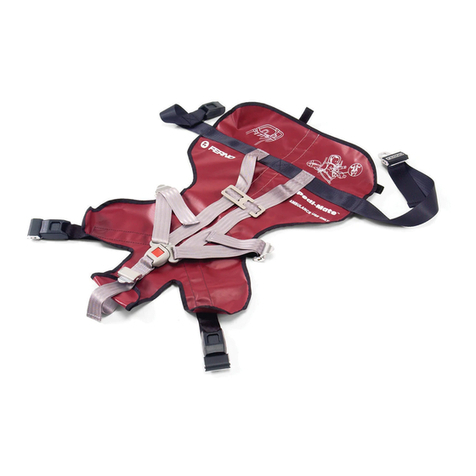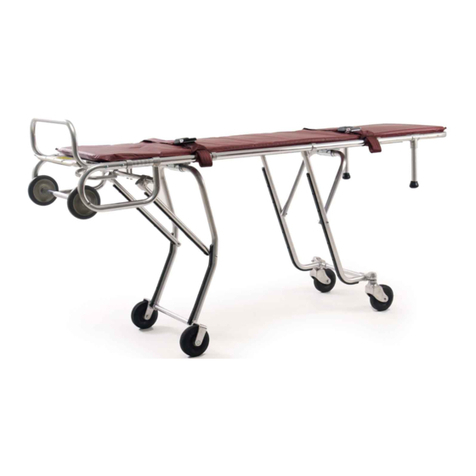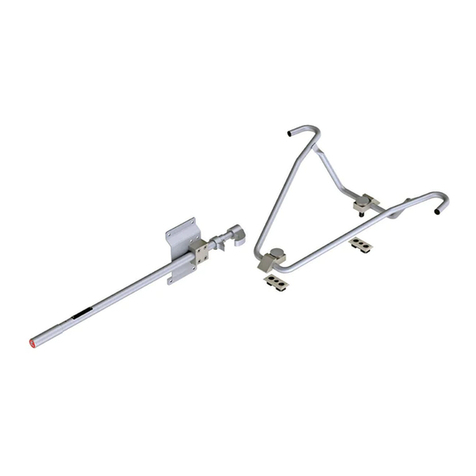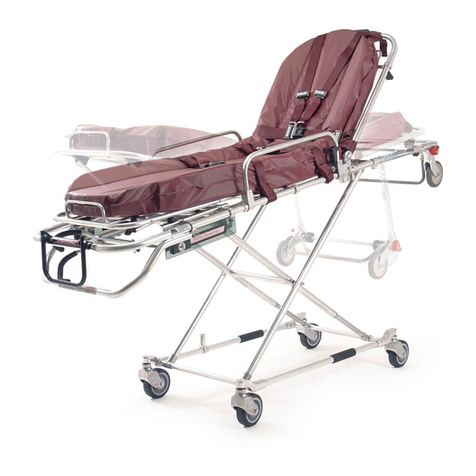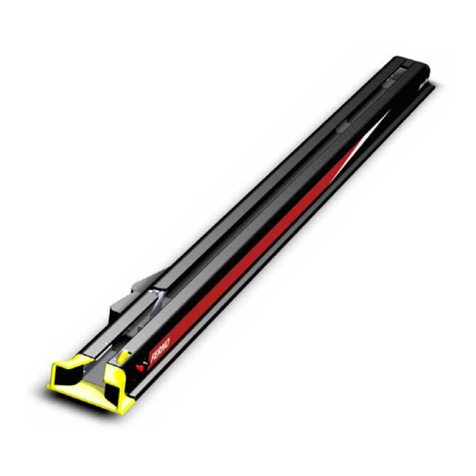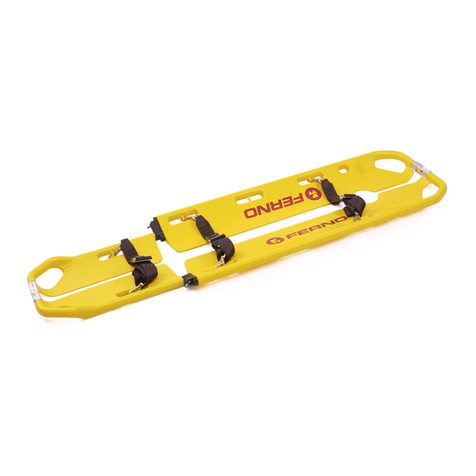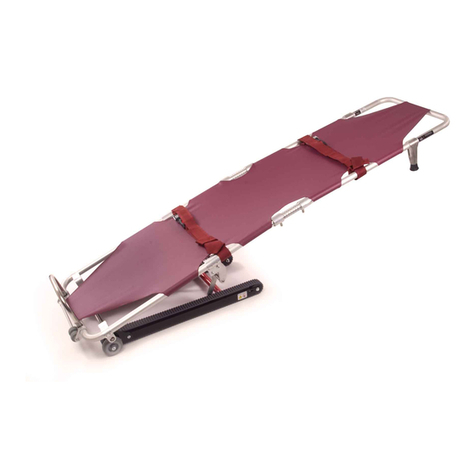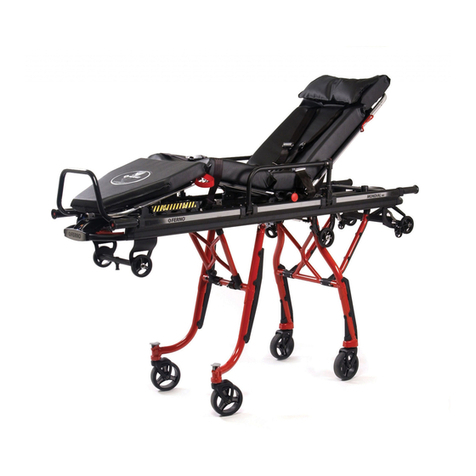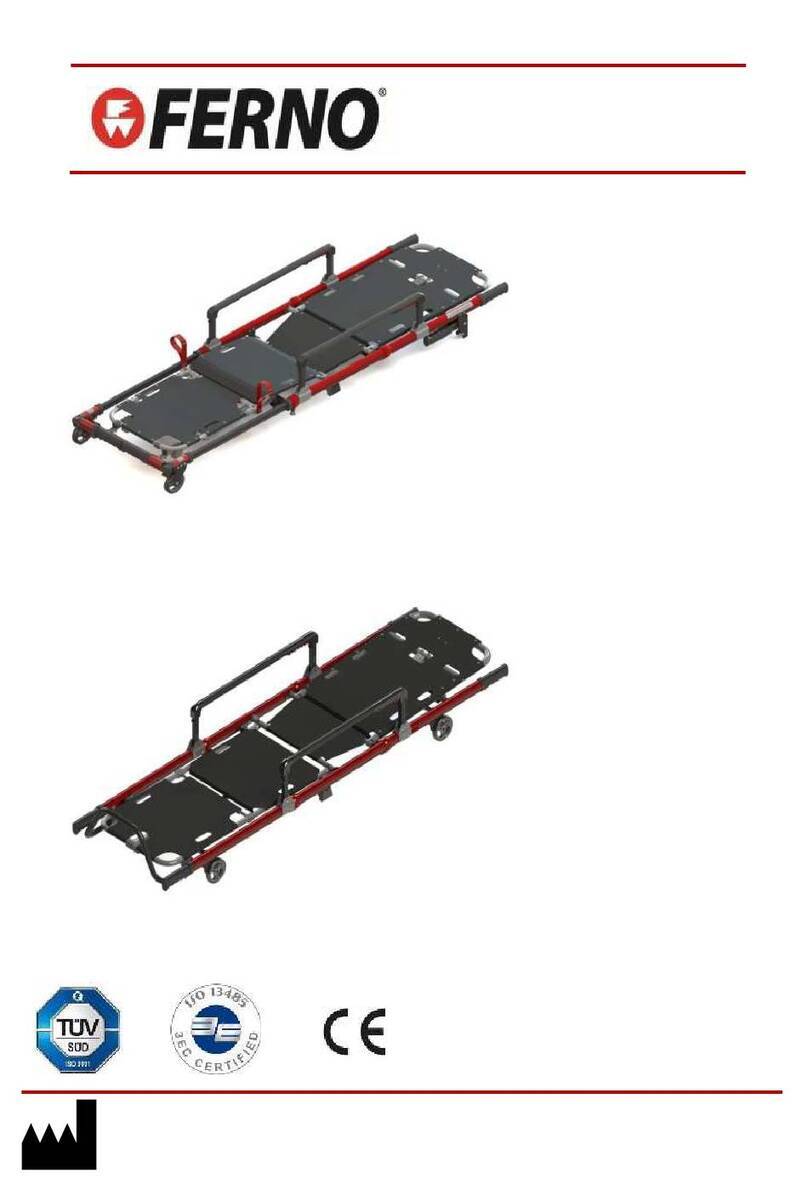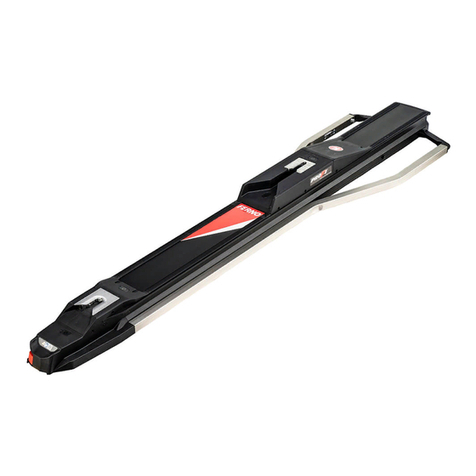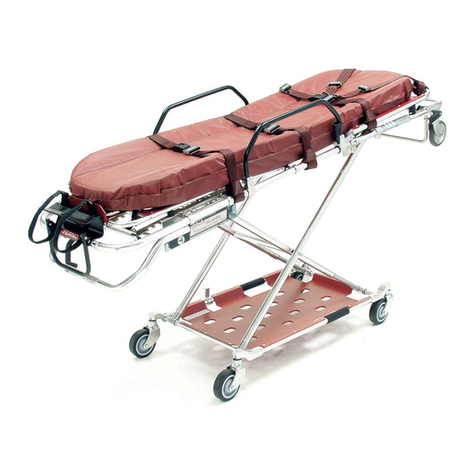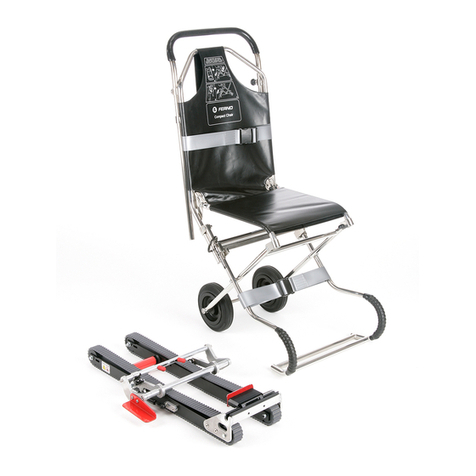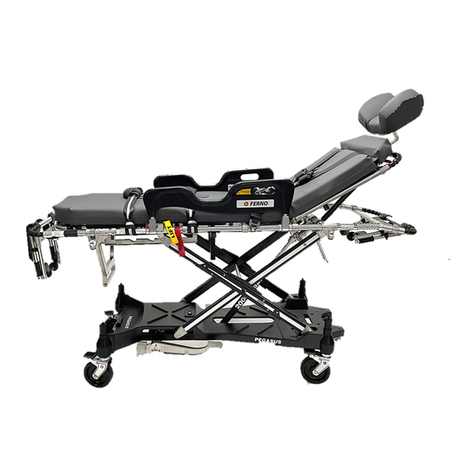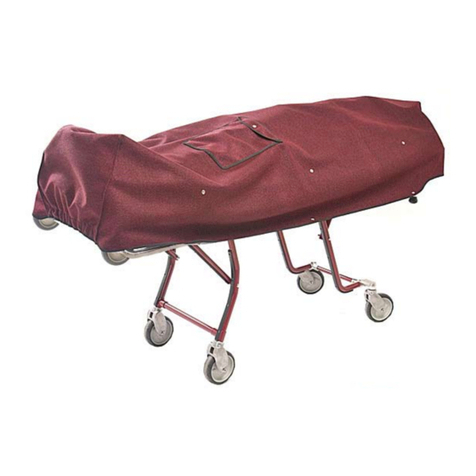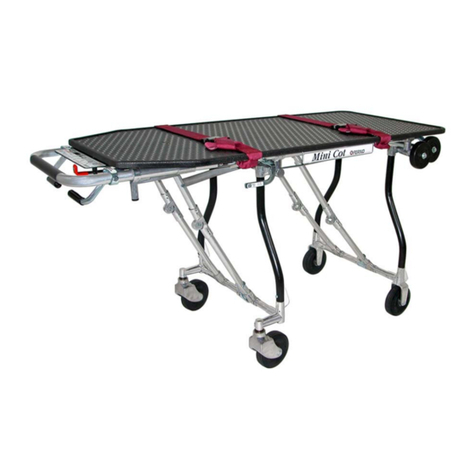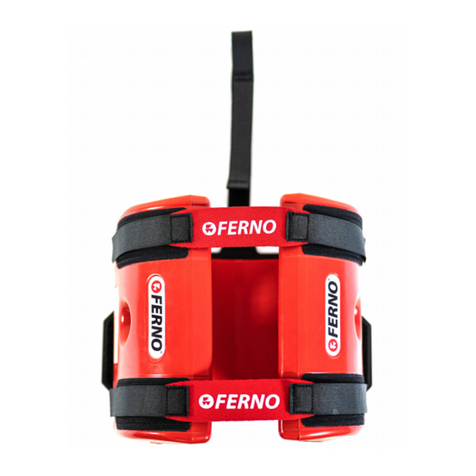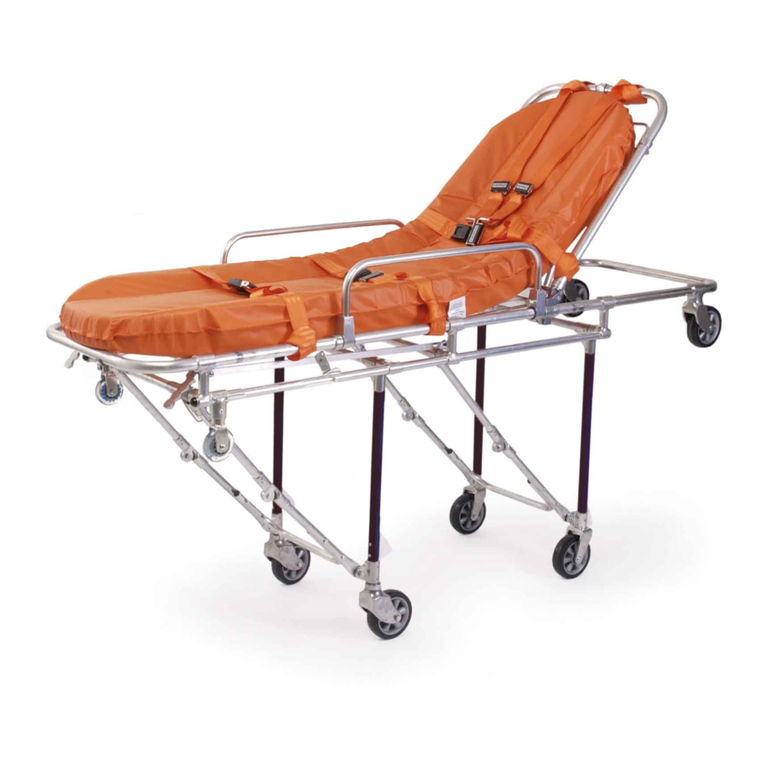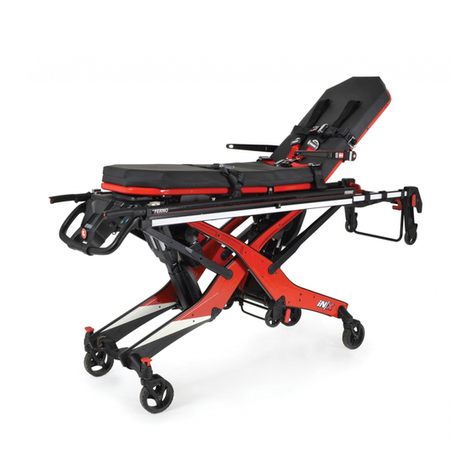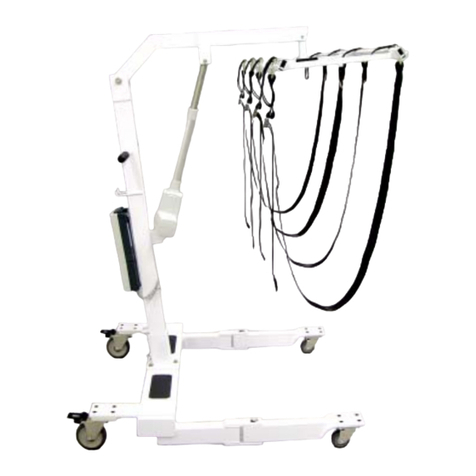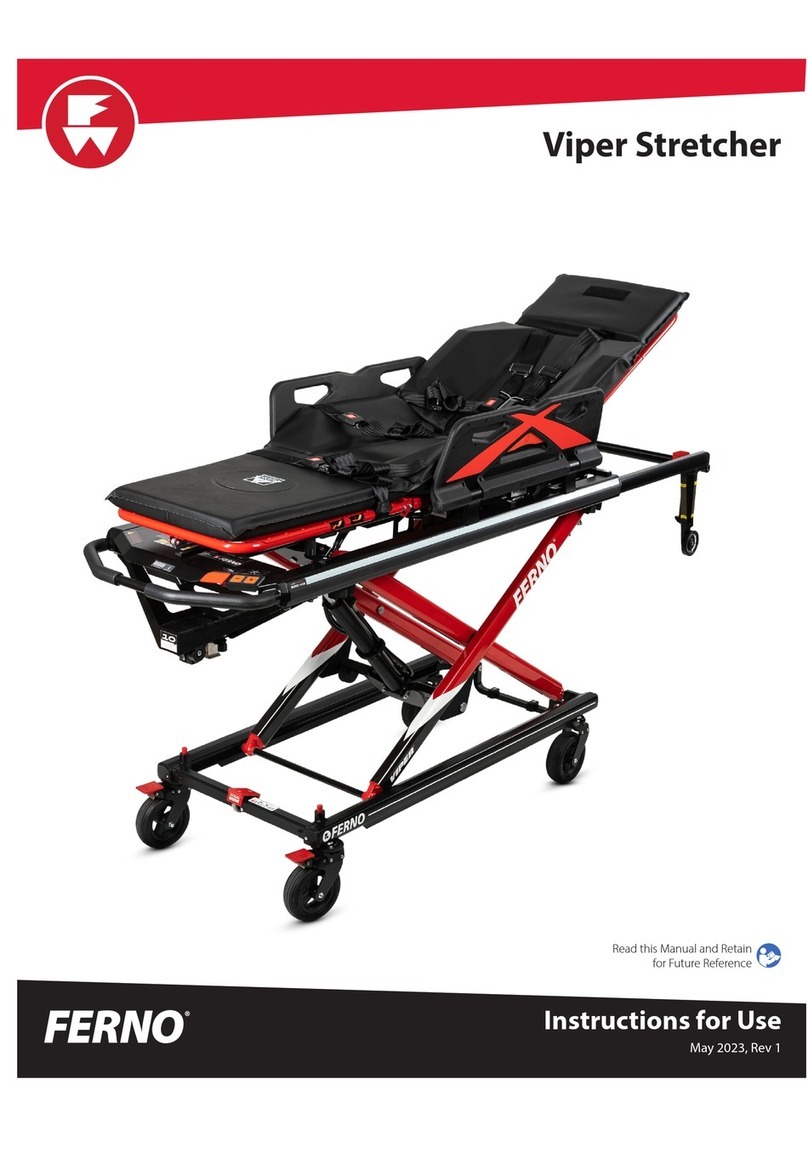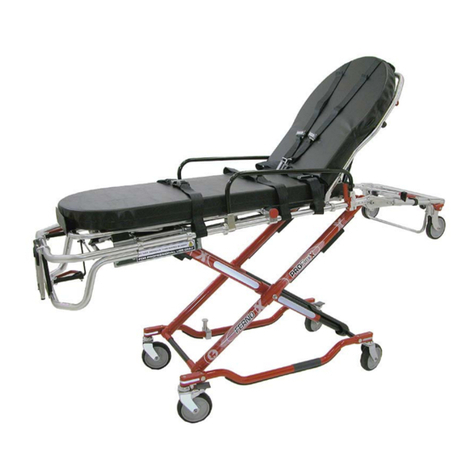
POWERFlexx™
© Ferno-Washington, Inc. 234-3310-01 May 2005 3
TABLE OF CONTENTS
Page
Section
1 - Safety Information ................................................ 5-6
1.1 Warning ............................................................ 5
1.2 Important .......................................................... 5
1.3 Bloodborne Disease Notice ............................. 5
1.4 Cot and Fastener Compatibility ....................... 5
1.5 Safety and Instruction Labels ........................... 6
2 - Operator Skills and Training .................................. 7
2.1 Skills ................................................................. 7
2.2 Training ............................................................ 7
2.3 Height and Strength Considerations ................. 7
3 - About the Cot ...................................................... 8-10
3.1 Cot Description ................................................ 8
3.2 General Specifications ..................................... 8
3.3 Components ...................................................... 9
3.4 Cot Height ...................................................... 10
4 - Setup and Installation....................................... 11-13
4.1 Attach the Restraints and Mattress.................. 11
4.2 Install the Safety Hook ............................. 11, 12
4.3 Update Your Model 175 Fastener .................. 13
5 - Using the Hydraulic Power System ................. 14-17
5.1 General Guidelines ......................................... 14
5.2 Main Power Switch ........................................ 14
5.3 Touch Pad Controls ........................................ 15
5.4 Battery Charge Indicator ................................ 15
5.5 Manual Mode ................................................. 16
5.6 Battery Charger .............................................. 17
5.7 Power Pack Module ....................................... 17
6 - Cot Features ........................................................ 18-23
6.1 Drop Frame .................................................... 18
6.2 Safety Bar Release Handle ............................. 19
6.3 Backrest .......................................................... 19
6.4 Sidearms ......................................................... 20
6.5 Shock Frame ................................................... 20
6.6 Adjustable Foot-End Lift Bar ........................ 21
6.7 Lead Handle ................................................... 22
6.8 Wheel Locks ................................................... 22
6.9 Patient Restraints ............................................ 23
6.10 Locking Mattress ............................................ 23
Page
Section
7 - Using the Cot ..................................................... 24-28
7.1 Before Placing the Cot in Service .................. 24
7.2 General Guidelines for Use ............................ 24
7.3 Changing Cot Height ...................................... 25
7.4 Transferring the Patient ................................... 26
7.5 Rolling the Cot ............................................... 27
7.6 Using Additional Help.................................... 28
8 - Loading and Unloading the Cot ........................ 29-32
8.1 Fastener Compatibility ................................... 29
8.2 Guidelines and Preparation ............................ 29
8.3 Loading the Cot .............................................. 30
8.4 Unloading the Cot .......................................... 31
8.5 One Operator Loading/Unloading
an Empty Cot .................................................. 31
8.6 Non-Powered Loading and Unloading .......... 32
9 - Maintenance ........................................................ 33-37
9.1 Maintenance Schedule ................................... 33
9.2 Disinfecting and Cleaning the Restraints ....... 33
9.3 Disinfecting and Cleaning the Mattress ......... 33
9.4 Disinfecting the Cot ....................................... 33
9.5 Cleaning the Cot ............................................. 34
9.6 Waxing the Cot ............................................... 34
9.7 Inspecting the Cot........................................... 34
9.8 Lubricating the Cot......................................... 35
9.9 Charging the Batteries .................................... 36
9.10 Adjusting the Tension Of the
Manual Mode Cable ....................................... 37
10 - Parts and Service .............................................. 38-39
10.1 Parts and Service - USA and Canada ............. 38
10.2 Parts and Service - Outside North America ... 38
10.3 Parts List ......................................................... 38
10.4 Parts Diagrams ............................................... 39
11 - Accessories and Related Products ........................ 40
12 - Limited Warranty .................................................. 41
13 - Ferno Customer Relations .................................... 41
Training Record............................................................. 42
Maintenance Record ..................................................... 43
